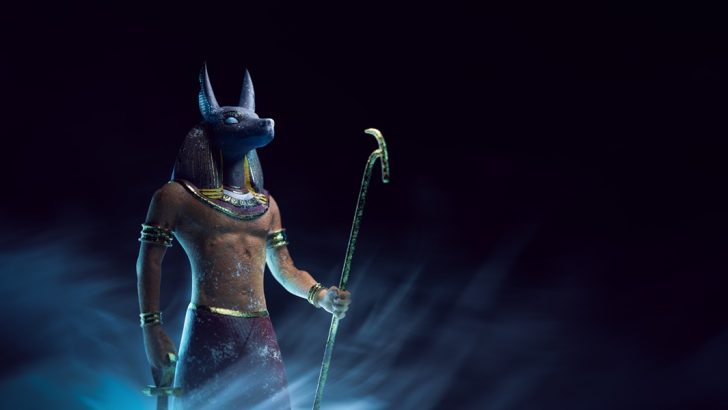Throughout history, cultures around the world have created gods and goddesses to help explain death and what happens after we die.
These powerful beings control the underworld, judge souls, or guide the dead to their final resting place.
From skeleton-faced rulers to jackal-headed guides, death deities reflect how different societies understand and cope with mortality.
1. Anubis: Egypt’s Jackal-Headed Guardian
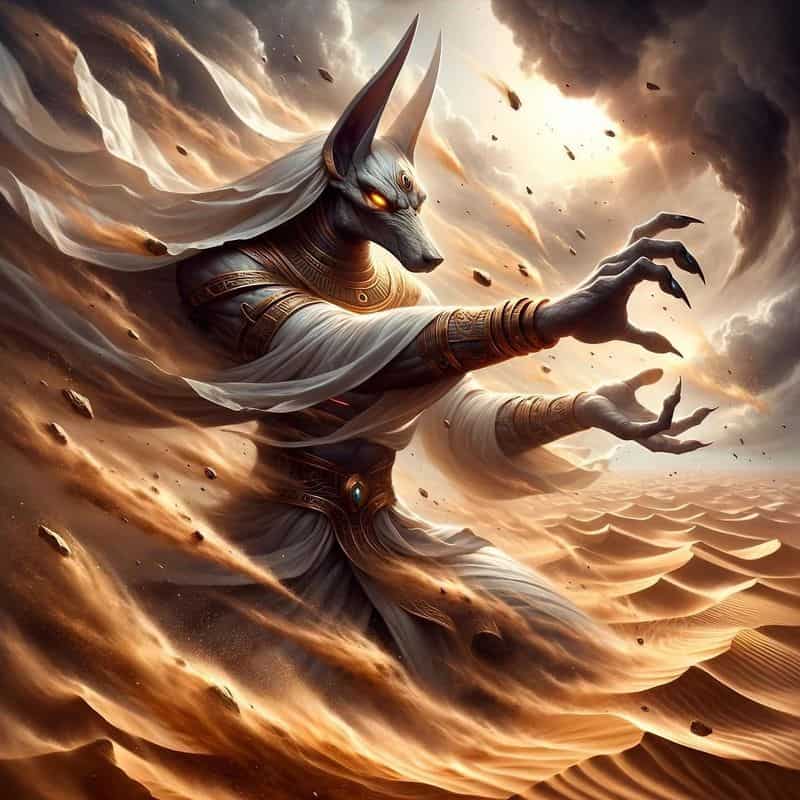
Standing tall with his distinctive jackal head, Anubis watches over Egypt’s dead with unwavering dedication. This ancient guardian weighs hearts against a feather to determine if souls deserve paradise.
Unlike many death gods, Anubis isn’t feared but respected as a protector who ensures proper passage to the afterlife. He invented embalming to preserve Osiris’s body, becoming the patron of mummification.
Ancient Egyptians painted his image on tomb walls, believing his watchful eyes would guard their loved ones through eternity’s journey.
2. Hel: The Half-Beautiful Ruler of the Norse Underworld

Half living woman, half decaying corpse – Hel’s split appearance perfectly captures her domain between worlds. Daughter of trickster god Loki, she rules the cold, misty realm that shares her name, where those who die of illness or old age reside.
Vikings didn’t fear her judgment but dreaded her cheerless kingdom. Unlike Valhalla’s glory, Hel offered only a shadowy existence.
Her loyal companion, a massive hound named Garmr, guards the entrance to her domain, ensuring no soul escapes her eternal embrace.
3. Mictlantecuhtli: The Bone Lord of Aztec Afterlife
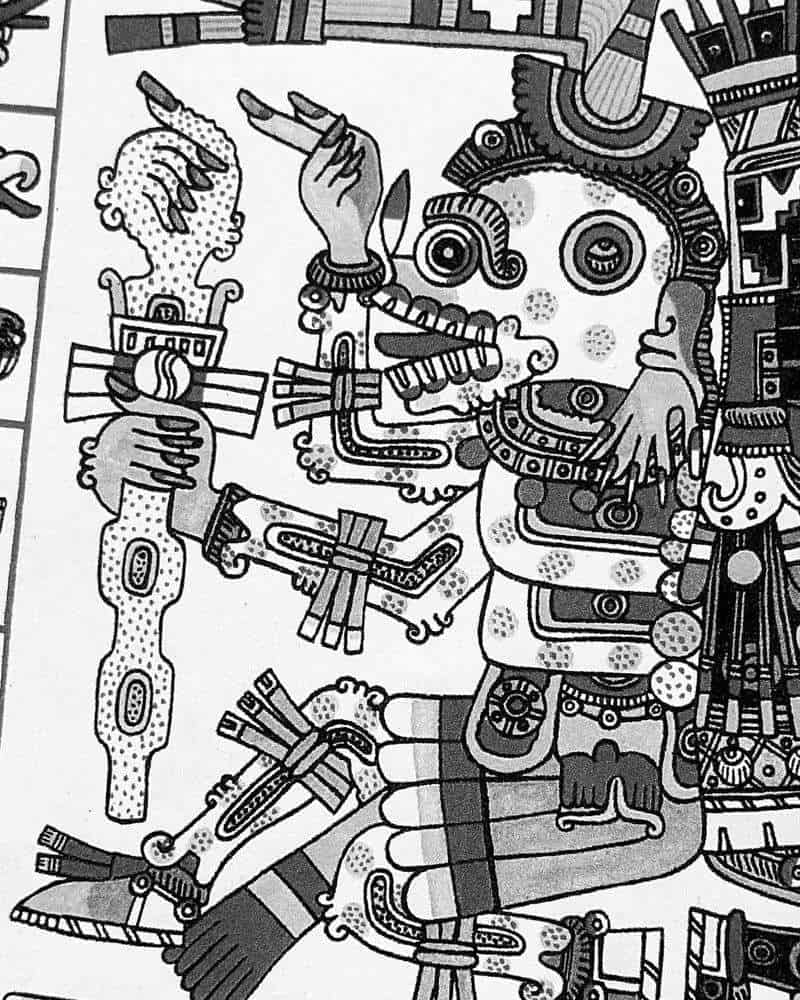
Blood-spattered and adorned with eyeballs, Mictlantecuhtli’s skeletal grin welcomed Aztec souls to his underworld kingdom. This fearsome deity ruled Mictlan, the lowest level of the underworld, alongside his wife Mictecacihuatl.
Souls journeyed through nine challenging levels to reach his realm, facing obstacles like mountains that crash together and winds of razor-sharp obsidian. His priests wore flayed human skin during rituals honoring him.
Modern Day of the Dead celebrations echo his ancient influence, transforming fear into festive remembrance.
4. Yama: The First Mortal Who Became Death’s Judge
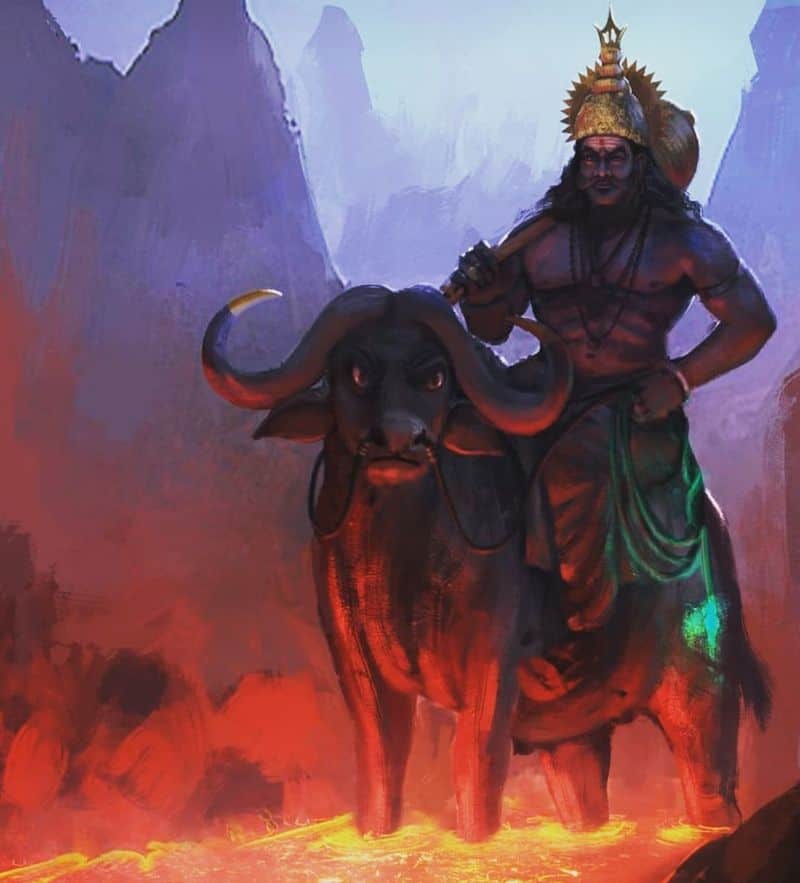
Riding his mighty buffalo through the cosmos, Yama carries a noose to capture departing souls. Hindu mythology honors him as the first mortal who died, blazing the path to the afterlife that all would eventually follow.
Two four-eyed dogs guard his abode, keeping watch for approaching spirits. Unlike Western death gods, Yama serves as a divine judge rather than a grim reaper, maintaining cosmic balance through fair judgment.
His sister Yami grieved so deeply at his death that the gods created night to give her respite from endless sorrow.
5. Santa Muerte: Mexico’s Controversial Skeleton Saint

Draped in colorful robes with her scythe in hand, Santa Muerte stands as death’s feminine face in modern Mexican folk Catholicism. This skeleton saint emerged from the shadows in recent decades, gaining millions of devoted followers despite official church condemnation.
Her faithful bring cigarettes, tequila, and candies as offerings to win her protection. Unlike official saints, she accepts all petitioners without moral judgment, making her beloved among society’s marginalized.
Her seven-colored candles represent different powers – from love (red) to justice (purple) to prosperity (gold).
6. Hades: The Wealthy Lord of Greek Underworld
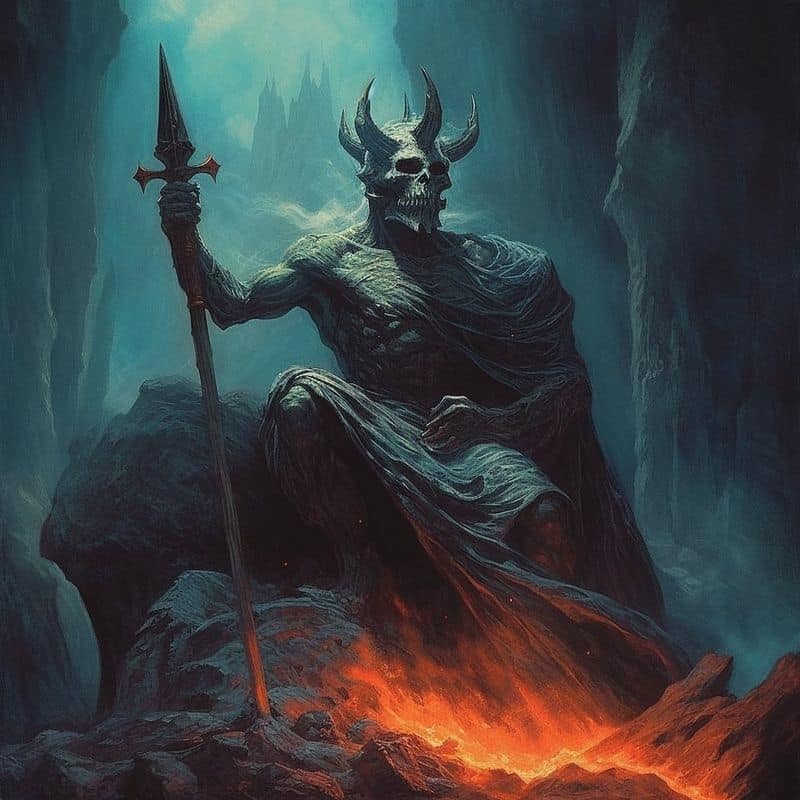
Misunderstood yet immensely powerful, Hades rules his shadowy kingdom with surprising fairness. His name literally means “the unseen one,” reflecting how ancient Greeks avoided speaking it directly out of reverence and fear.
Despite popular misconceptions, he wasn’t evil – just serious and unbending in his duties. The Greeks called him “Plouton” (wealthy one) because all precious metals and gems lay within his underground domain.
His three-headed hound Cerberus guards the entrance, ensuring souls enter but never leave his realm where all mortals eventually reside.
7. Izanami: Japan’s Creator Turned Decay Goddess

Tragedy transformed this creator goddess into death’s embodiment when she perished giving birth to fire. Izanami retreated to Yomi, the shadowy Japanese underworld, where her beautiful form rotted into a horrifying specter.
When her husband Izanagi followed to retrieve her, she chased him in rage after he saw her decayed state. Her story reflects the Japanese concept that death brings pollution and separation.
Each day, she claims one thousand lives, while her former husband creates one thousand five hundred to maintain population balance – an eternal cycle of creation and destruction.
8. Baron Samedi: Voodoo’s Skeleton in a Top Hat
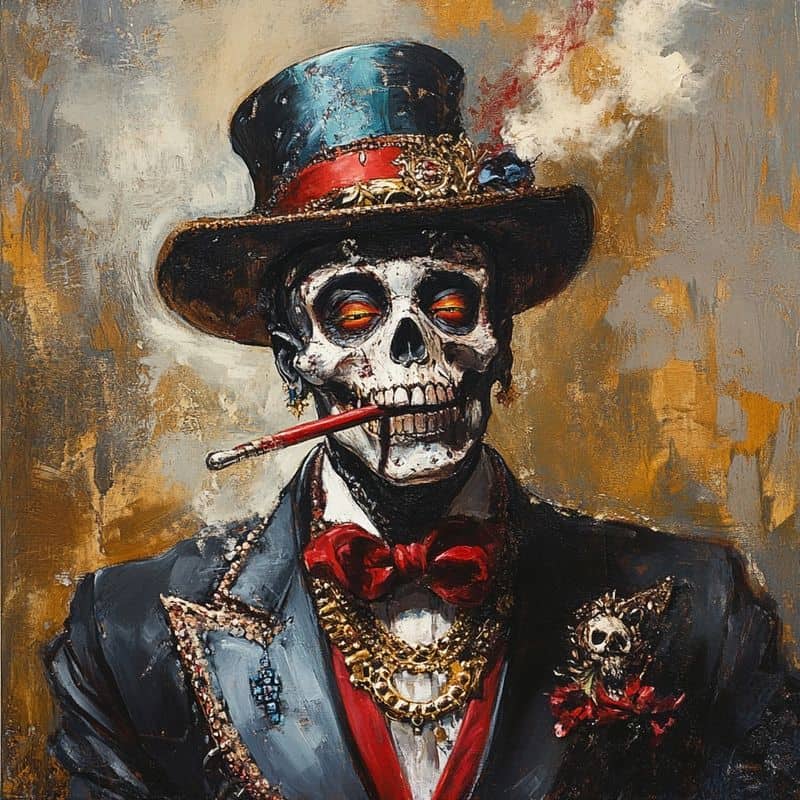
Sporting a top hat, tailcoat, and dark sunglasses, Baron Samedi brings theatrical flair to death’s serious business. This Haitian Vodou loa (spirit) stands at the crossroads between life and the afterlife, digging graves and welcoming souls to the other side.
Despite his macabre role, he’s wildly entertaining – known for crude jokes, dancing, and excessive rum consumption. His signature laugh echoes through cemeteries at midnight.
Believers say he can prevent death by refusing to dig someone’s grave, making him both feared and sought after through offerings of his favorite rum and cigars.
9. Ereshkigal: Mesopotamia’s Fierce Underworld Queen
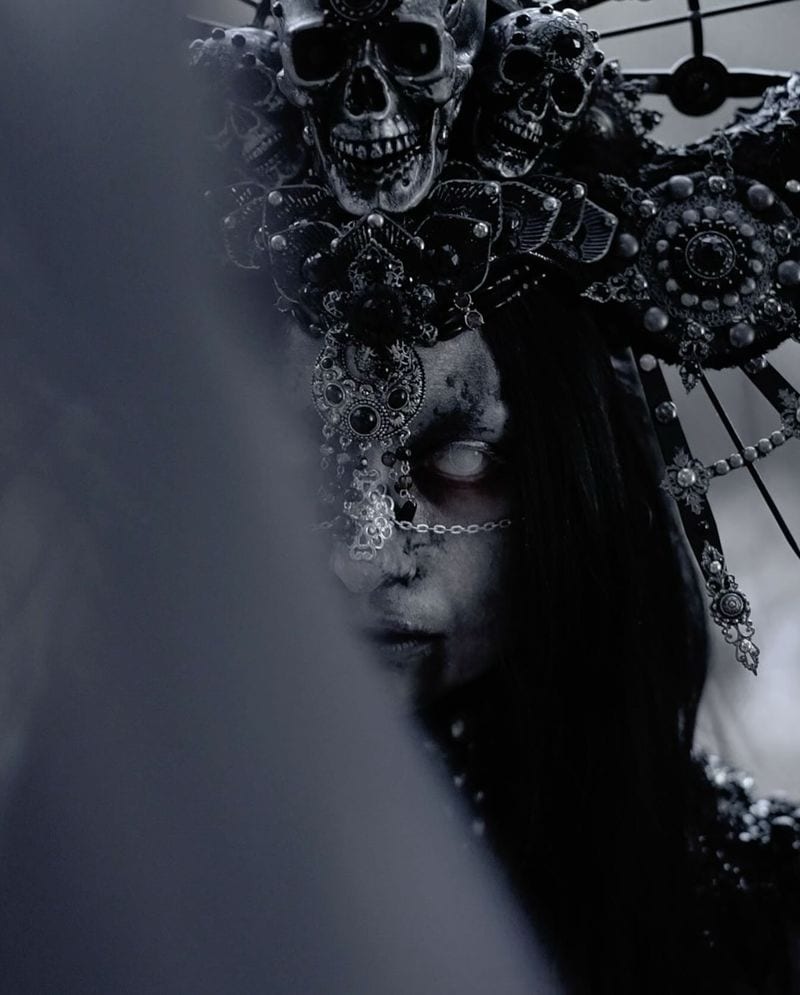
Banished to the underworld against her will, Ereshkigal transformed her exile into absolute power. This Mesopotamian goddess rules Irkalla, the land of no return, where all souls face her judgment regardless of their earthly status.
Seven gates guard her dark realm, where visitors must surrender a piece of clothing at each threshold until they stand naked before her throne. Her rage is legendary – when her sister Inanna visited, Ereshkigal hung her corpse on a hook until other gods intervened.
Clay tablets describe her as “the lady of the great place” who cannot be denied.
10. Ankou: Brittany’s Skeletal Cart Driver

Creaking through foggy Breton nights, Ankou’s wooden cart collects souls as his bony hands grip reins of time. This eerie figure from French folklore isn’t quite a god but death’s servant – the last person to die each year becomes the new Ankou.
Witnesses describe him as impossibly tall and thin, wearing a wide-brimmed hat that hides his skull face. His cart never stops moving, and hearing its distinctive squeak means someone nearby will soon die.
Unlike grand mythological deities, Ankou represents death’s humble, inevitable approach – patient, relentless, and ultimately unavoidable.

